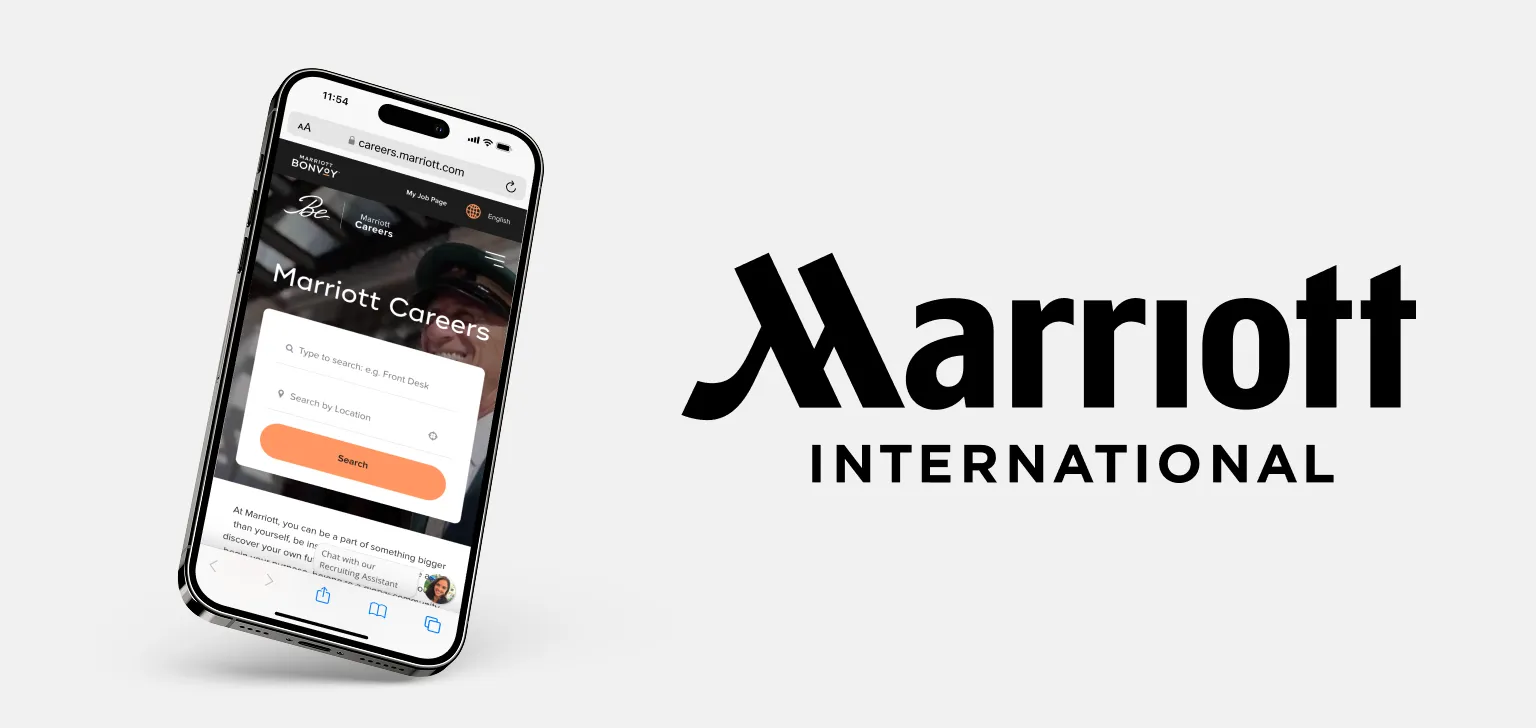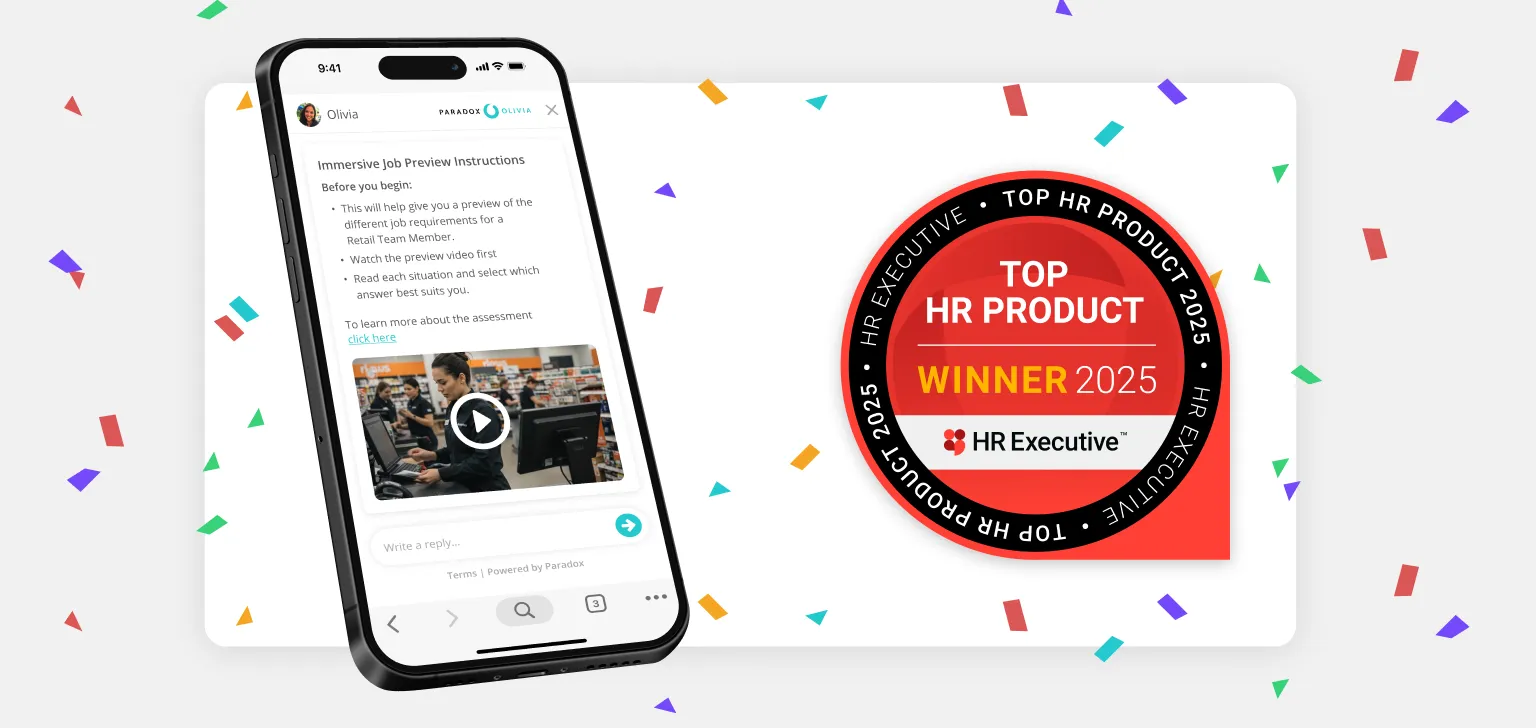You’ve heard it before: Unemployment at record lows (as low as 2.5% in some states) escalating wage rates (Compensation costs increased 4.5% in the last 12-months), and candidates dropping out or ghosting you throughout the process. With Indeed recommending applicants apply to 15 jobs per week, the competition is increasingly stiff — even after a candidate applies. Who can hope to hire enough people in this environment with all these headwinds?
Most frontline employers don’t have the time to navel gaze at unemployment numbers and wonder if the winds of macroeconomic change will come or if hiring will ever get (slightly) easier again. They have businesses to run and those businesses require people. Getting those people typically requires throwing more things at the challenge: having more candidates, spending more job advertising, and spending more time screening, scheduling and on-boarding people.
Or does it? What if the answer wasn’t to cast your net wider and spending more and more time and money but to make your net better and more efficient at getting them through your hiring process? The answer is a new kind of ATS that helps you make the most out of every applicant.
More people ≄ More hires
So much about hiring these days is about the impossible job of expanding a small pool of candidates. Research from Appcast shows that cost per application and cost per click on job boards are still well above pre-pandemic levels, making that task even more expensive with no guarantee of success.
It shouldn’t take dozens (or hundreds) of applications to fill one position, though. This inefficiency doesn’t have to be built into the recruitment process. It’s what happens when organizations focus mostly on finding and sourcing candidates instead of figuring out how to move more of their existing candidates through their hiring process better.
Instead, organizations should be investing in ways to convert the candidates they already have. That means focusing more on conversion and less on expanding a pool of candidates.
Where do candidates drop off in the recruiting process?
How do you make your hiring process more efficient?
The first step is to look at where candidates drop out of the hiring process. Don’t have those numbers handy for your organization? We’ve taken a look at the hiring metrics of traditional ATS’s and hiring systems and found common breakpoints that lead to a person abandoning the process. Take a look:
- Initial application: 80% drop-off rate. That’s right, the worst conversion is the very first step in your hiring process, which means every step after that is going to be worse because fewer people will have made an initial application. Why is this such a common failure point?
- Your hiring system requires a log-in or password
- The ATS isn’t optimized for mobile apply
- It takes more than five minutes to fill out an application
- Interview scheduling: 50% drop-off rate. Once a person applies, the clock starts ticking. People don’t usually apply for one job — they are applying for multiple. Waiting days or weeks to schedule and play phone tag, only to figure out that someone managed to line up an interview before you is discouraging.
- Hiring manager interview: 40% drop-off rate. After the interview is set, there shouldn’t be any more issues, right? Unfortunately, this is another area where organizations struggle. In between the long lead time between applying and scheduling and then scheduling and interviewing (often multiple days each), a person could have easily found a new job and started already. When things do come up with a candidate, most systems don’t allow you to easily reschedule, leading to candidates ghosting hiring managers.
- Onboarding: 35% drop-off rate. A candidate is offered the job and is ready to go. Why is this still a struggle for companies? For one, there is often a barrage of forms and paperwork sent to an email that is difficult to fill out and sign. And, again, this onboarding process takes far too long (sometimes weeks!) to go from the offer to the first day. That gives other companies plenty of time to reach out to your candidate and offer them an alternative to waiting.
By the end, you get to a staggering 97% overall drop-off rate. That means to get one hire, you’ll need at least 30 applicants to make it through the barrage of challenges in your current hiring process.
It doesn’t have to be that way, though. With a conversational ATS, organizations can improve their conversion rate exponentially.
72% reduction, though? Are we for real?
It’s one of those stats that feels completely, ludicrously, impossibly good. Too good to be true. But it’s not — we’ve seen companies achieve this with our own eyes. And it’s achievable because a Conversational ATS takes all of those drop-off points, removes the friction and barriers, and transforms them into conversion points instead.
Here’s what it looks like:
- Initial application: 360% improvement. While traditional hiring systems only convert one in five, conversational ATS converts 92% with a mobile-first, text-friendly, and conversational approach. That’s because there are no forms, no logins, no passwords, and no terrible UI. Just apply with a text conversation right on your phone and take care of any screening through the same interface.
- Interview scheduling: 94% improvement. 24/7 text scheduling, which gets most people set for an interview within an hour of applying, converts 97% of applicants as opposed to 50% in traditional approaches. Not to sound like a broken record but that’s because it all works through text messaging. No websites with confusing calendars to navigate.
- Hiring manager interview: 53% improvement. With the speed of scheduling and the ease of rescheduling when life gets in the way, candidates convert at a 92% clip compared to 60% with traditional ATSs. Hiring managers can’t waste precious time reminding people about interview times, giving directions to the location, or getting ghosted by candidates. More interviews = more hires.
- Onboarding: 52% improvement. Our conversational approach makes it easy for new hires to navigate onboarding paperwork and show up for the job ready, with 91% of candidates converting at this stage versus 65% with traditional hiring. Because a conversational ATS is still just a text-based conversation, new hires manage everything through their phone ensuring they show up for their new job prepared to immediately add value.
Because making performance improvements at the beginning of your process is more impactful to your overall conversion rate, organizations with a conversational ATS have a 73% conversion rate through their hiring process compared to just 3% for the typical traditional way.
A 2,300% improvement sounds impressive but let’s think about it in real numbers. Instead of needing 30+ candidates to fill one role, you would need two. Actually, you need less than two candidates but we’re dealing with whole people here. With the same amount of candidates as it took to hire one person with a traditional hiring process, you could hire 24 people.
Not too shabby.
Better conversion is never a bad move
Adding more people to an inefficient hiring process will always be easier in the short term than making your hiring process more efficient — but in the long run, it’s costing you time and money. It’s a bandaid solution.
Making your hiring process a high-converting machine with a conversational ATS is a valuable long-term investment that pays off, though. Every person that looks for a job from your company will perform better in every phase of the hiring process. Every dollar your organization spends on sourcing and expanding the hiring pool goes further. Even if hiring gets easier, those savings are persistent through ups and downs.
You might not always be able to increase candidate flow but you can always improve candidate conversion. Don't let quality candidates slip through the cracks of an outdated way of hiring. Conversational ATS platforms can reduce your drop-off by 72%..
It's not a pipe dream, it's real, and it's spectacular.









